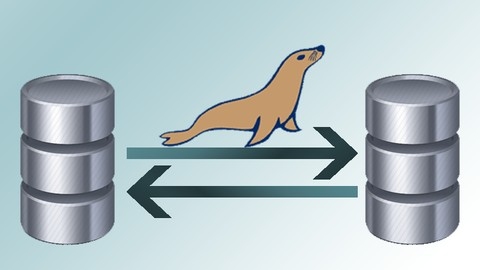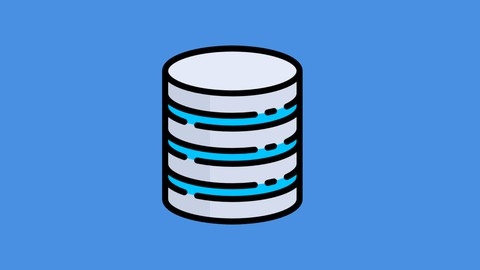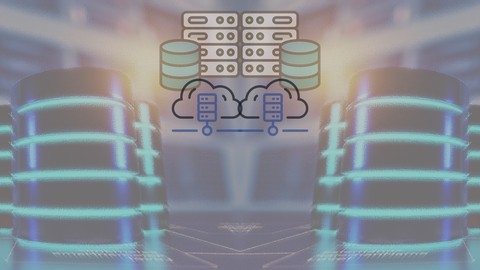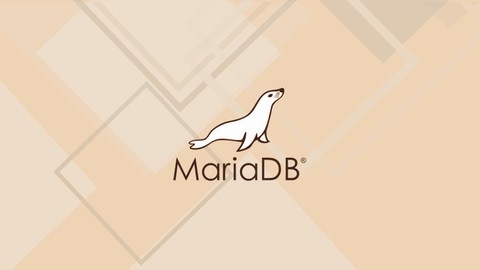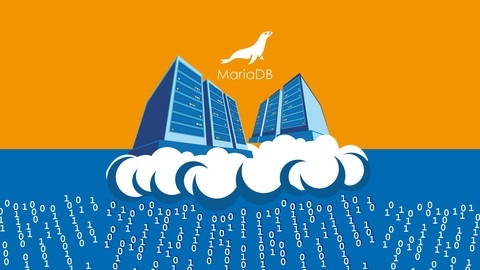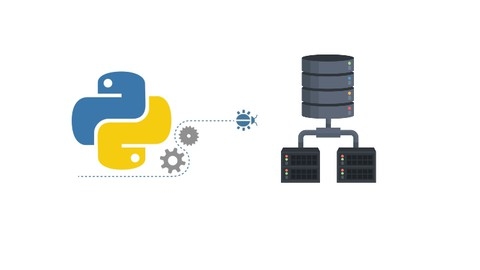Galera Cluster and MariaDB MySQL Replication
The course starts by covering the fundamental database replication concepts, including the ACID model, master-slave and multi-master replication, synchronous and asynchronous replication, and the differences between statement-based and row-based replication.
You’ll also learn about certification-based replication, which is a key concept in Galera Cluster.
The course explains the certification process with examples and discusses isolation types and the lost update problem.
It then dives into snapshot transfer and its different modes, as well as the limitations of Galera Cluster.
The practical section is where you’ll get hands-on experience building a Galera Cluster.
You’ll prepare the nodes, install MariaDB, configure it for Galera, start the cluster, and verify replication.
The course also covers node failure tests like graceful shutdown, power off, and restarting the cluster.
Adding new nodes to an existing cluster is another important topic covered.
You’ll learn about weighted quorum and its role in preventing split-brain scenarios.
The course also touches on Galera Cluster security and load balancing concepts.
Monitoring is crucial for any database cluster, and this course teaches you how to read WSREP variables to monitor the cluster’s status.
Learn MariaDB SQL for beginners from scratch
The course starts by introducing you to SQL and MariaDB, explaining what they are and how they relate to MySQL.
You’ll learn the basic database concepts like schemas, which will help you understand how databases are structured.
Next, you’ll go through the process of installing and configuring MariaDB on your system, as well as downloading the necessary tools and sample databases.
This hands-on approach ensures that you’ll be able to follow along and practice as you learn.
Once you have the setup ready, the course dives into data types and CRUD operations, which are essential for working with databases.
You’ll learn how to create, read, update, and delete data, as well as how to remove duplicates and sort data.
The course also covers aliases, which can make your queries more readable and easier to understand.
Moving on, you’ll explore aggregate functions like AVG, COUNT, MAX, MIN, and SUM, which are incredibly useful for analyzing and summarizing data.
The course also covers the GROUP BY and HAVING clauses, which allow you to group and filter data based on specific conditions.
One of the most important topics covered in the course is extracting data from multiple tables using various join types, such as INNER JOIN, CROSS JOIN, LEFT JOIN, and RIGHT JOIN.
You’ll learn how to combine data from different tables and how to handle NULL values, which are common in databases.
The course also covers operators like UNION, EXCEPT, INTERSECT, AND, and OR, which are essential for combining and filtering data based on specific conditions.
Throughout the course, you’ll be working with real-world examples and exercises, ensuring that you’ll gain practical experience and be able to apply what you’ve learned immediately.
Build a REST API with MariaDB ,Python, Django
The course starts by guiding you through the necessary installations, including Python, a virtual environment, Django, and the REST framework.
You’ll also learn how to set up MariaDB, a popular open-source database, with Django.
Once the setup is complete, you’ll create a new Django project and app, register the app, and apply Django migrations.
This lays the foundation for building your REST API.
Next, you’ll dive into models and serializers, which are crucial components of a REST API.
You’ll create a model, apply migrations, and create a serializer class to convert complex data types to Python data types that can be easily rendered into JSON or XML.
The course then focuses on views and URLs, which are the backbone of any web application.
You’ll learn how to create views, map them to URLs, and register your model.
Additionally, you’ll create a superuser account, which is essential for managing your Django project.
With the groundwork laid, you’ll learn how to create model objects and test your API using Postman, a popular tool for testing APIs.
You’ll perform CRUD (Create, Read, Update, Delete) operations on your API, ensuring it functions as expected.
MariaDB Galera Cluster Database Replication MySQL Deployment
The course starts by introducing you to MariaDB and the labs you’ll be working on for hands-on experience with deployment.
You’ll dive into different MariaDB topologies and configurations, including Master-Slave (Active/Backup) and Master/Master (Active/Active) setups.
Through a lab and test, you’ll get practical experience configuring a Master/Slave replication environment.
The highlight of the course is the MariaDB Galera Cluster deployment lab, where you’ll learn to set up a Galera cluster for high availability and load balancing.
This is a crucial skill for anyone working with mission-critical database systems.
Finally, the course covers how to install MariaDB on your personal computer using VMs like VMware, VirtualBox, or Vagrant.
This allows you to practice in a safe environment before deploying to production.
Mastering SQL with MariaDB: An Essential Beginner’s Guide
The course starts by introducing you to databases and SQL, covering the basics of relational databases and the features and advantages of MariaDB over MySQL.
You’ll learn how to set up your MariaDB environment, including installing the database management tool and downloading sample databases to practice with.
From there, the course dives into the fundamentals of working with data in MariaDB.
You’ll learn about different data types and how to retrieve data using the SELECT statement, filtering results with the WHERE clause, sorting with ORDER BY, and limiting result sets.
The course also covers data manipulation, teaching you how to insert, update, and delete records, as well as manage transactions for data integrity.
One of the key focuses is on CRUD (Create, Read, Update, Delete) operations.
You’ll learn how to add new data, read existing data, update records, and delete data from tables.
The course even covers more advanced topics like truncating and dropping tables, as well as removing duplicates and sorting data.
Data aggregation and grouping are also covered in-depth.
You’ll learn how to use aggregate functions like AVG, COUNT, MAX, MIN, and SUM, as well as how to group data using the GROUP BY clause and filter grouped data with the HAVING clause.
The course then moves on to extracting data from multiple tables, covering table relationships (one-to-one, one-to-many, many-to-many) and different types of joins like INNER JOIN, LEFT JOIN, and RIGHT JOIN.
You’ll also learn how to use subqueries for more complex queries.
Additionally, you’ll gain an understanding of various operators in SQL, including UNION, EXCEPT, INTERSECT, comparison operators, and logical operators like AND and OR.
In the advanced section, the course covers techniques like using aliases for better readability, working with views and stored procedures, and an introduction to database security and user privileges.
Throughout the course, you’ll apply your SQL skills to real-world scenarios, ensuring you’re well-prepared to work with MariaDB in practical situations.
Learn MariaDB : A Beginner to Advanced Guide
You will start by learning what MariaDB is and its key features, before diving into the installation process for both MariaDB and HeidiSQL, a user-friendly database administration tool.
From there, you will gain hands-on experience with essential database operations.
You will learn how to create and manage databases, tables, and records.
This includes inserting, selecting, updating, and deleting data using SQL queries.
The course covers important clauses like WHERE, LIKE, ORDER BY, and DISTINCT, as well as aggregate functions like COUNT, SUM, MIN, MAX, and AVG.
You will also explore advanced concepts such as joins (INNER, LEFT OUTER, and RIGHT OUTER), set operations (UNION, UNION ALL, and INTERSECT), and exporting databases.
Additionally, you will learn how to create functions, procedures, and handle conditions and comparisons within your SQL code.
To provide a more comprehensive learning experience, the course includes a section on setting up a virtual environment using Virtual Box and CentOS, an open-source Linux distribution.
You will learn how to download and install these tools, as well as how to install MariaDB on CentOS.
Finally, the course covers the installation and configuration of Galera Cluster, a widely-used solution for creating highly available and scalable MariaDB clusters.
Throughout the course, you will gain practical experience with MariaDB, HeidiSQL, Virtual Box, CentOS, and Galera Cluster, equipping you with the skills necessary to work effectively with relational databases in various environments.
Learn MariaDB From Scratch
You’ll start by understanding what MariaDB is and how to download and install it on your system.
Along the way, you’ll learn about Heidi, a popular graphical user interface tool for managing MariaDB databases.
The course dives deep into database concepts, ensuring you have a solid foundation before moving on to hands-on activities.
You’ll learn how to create tables in MariaDB, add data to those tables, modify existing data, and view the data stored in your databases.
But that’s not all – you’ll also learn how to remove data from MariaDB when needed, and how to use aliases to simplify your queries.
Throughout the course, you’ll work with practical examples and exercises, solidifying your understanding of these concepts.
Getting Started with MariaDB
You’ll start by learning the fundamentals, including what MariaDB is, its key features, and how to download and install it along with HeidiSQL.
You’ll then dive into creating and managing databases, tables, and records using essential commands like SELECT, INSERT, UPDATE, and DELETE.
As you progress, you’ll explore more advanced concepts like filtering data with WHERE and LIKE clauses, sorting with ORDER BY, and removing duplicates with DISTINCT.
The course also covers aggregate functions like COUNT, SUM, MIN, MAX, and AVG, as well as joining tables using INNER, LEFT, and RIGHT OUTER JOINs.
You’ll learn how to combine result sets using UNION and UNION ALL operators, and even work with the INTERSECT operator.
The course doesn’t stop there – you’ll also learn how to export databases, create functions and procedures, and work with conditions and comparison operators.
To provide a hands-on experience, you’ll download and set up Virtual Box, install a CentOS ISO image, and configure a virtual machine.
This will allow you to install MariaDB on CentOS and even set up a Galera Cluster for a more advanced learning experience.
Build a CRUD Application with Python and MariaDB
This course will guide you through building a CRUD (Create, Read, Update, Delete) application using Python and MariaDB.
You will start by setting up Python and a text editor on your system.
The course then walks you through designing the application interface step-by-step over multiple lessons.
Next, you’ll install MariaDB, create a database and table, and set up a virtual environment.
The course covers installing the necessary database connector and creating a configuration file to interact with the database.
You will learn to create a Python class with methods and functions to handle the CRUD operations.
The lessons then focus on connecting Python to the MariaDB database and performing various interactions like viewing data stored in the database.
Throughout the course, you’ll get hands-on experience activating widgets and integrating the application interface with the backend database operations.
By the end, you’ll have built a fully functional CRUD app using Python and MariaDB.
Introduction to MariaDB for Absolute Beginners
You will start by learning how to set up MariaDB on your system, including downloading and installing the necessary software, as well as a MariaDB management tool and a sample database to practice with.
Next, you’ll dive into the fundamentals of MariaDB, exploring its data types and basic database concepts like schemas.
The course will also shed light on the relationship between MariaDB and MySQL, two closely related database systems.
A significant portion of the course is dedicated to mastering CRUD operations, which are the bread and butter of database management.
You will learn what CRUD stands for and how to perform these essential operations: creating, inserting, retrieving, updating, and deleting data within your databases.
You’ll also learn advanced techniques like truncating and dropping tables, removing duplicates from your data, sorting records, and using aliases to simplify your queries.
Additionally, you’ll gain expertise in retrieving data using logical operators like AND and OR, enabling you to filter and combine results based on multiple conditions.
Throughout the course, you’ll work with real-world examples and hands-on exercises, ensuring that you not only understand the concepts but also develop practical skills in managing and manipulating data with MariaDB.
